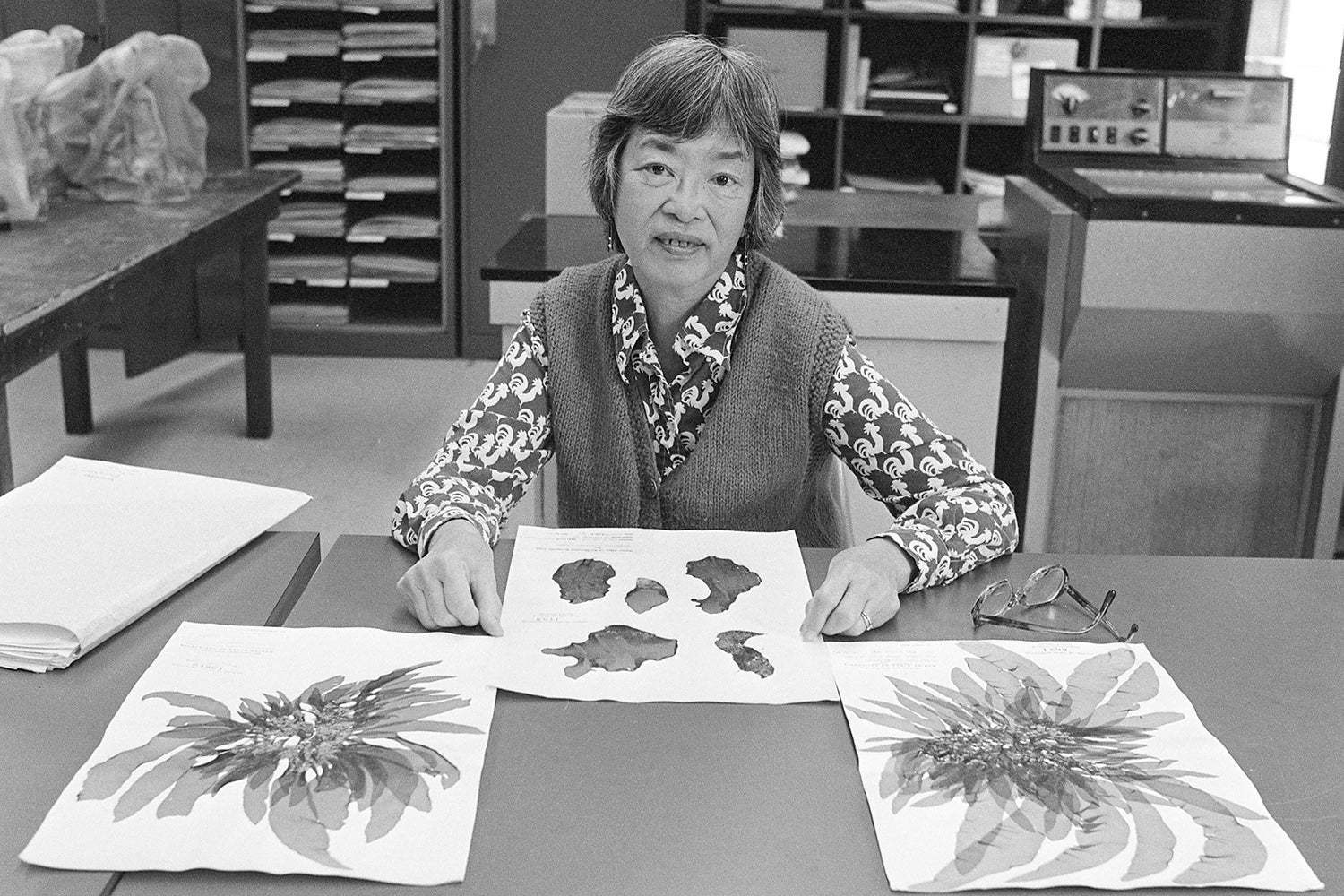Trailblazing marine botanist Isabella Aiona Abbott honored at Hopkins Marine Station
A lecture hall at Stanford’s Hopkins Marine Station will be named for Isabella Aiona Abbott, a pioneering marine botanist and the university’s first Native Hawaiian faculty member and first female full professor in biological sciences. “Integrating Local Ecological Knowledge and Marine Conservation Science,” this year’s memorial lecture honoring her, will be delivered on Friday, May 27.
Stanford’s Hopkins Marine Station, where pioneering professor Isabella Aiona Abbott is honored with an annual lecture each May, will soon have a visible, daily reminder of the marine botanist who was Stanford’s first Native Hawaiian faculty member and first female full professor in biological sciences.

Biological sciences Professor Isabella A. Abbott, who taught for more than 20 years at Hopkins Marine Station, discovered hundreds of new species of seaweed. (Image credit: Chuck Painter / Stanford News Service)
When cultural anthropologist and marine scientist Michelle María Early Capistrán delivers the Isabella Abbott Memorial Lecture on May 27, the event will coincide with the official renaming of the Isabella Abbott Lecture Hall.
Capistrán, a visiting scientist at the Mathematical Ecology Lab at CICESE in Ensenada, Mexico, will discuss “Integrating Local Ecological Knowledge and Marine Conservation Science.”
Both the seminar series and the lecture hall, which seats nearly 100 people and was formerly known as the Boatworks Lecture Hall, pay tribute to Abbott and her influence.
Teacher, researcher and role model
Abbott’s Stanford career began in 1960, when she was hired as a lecturer in biology and taught summer courses at Hopkins. In the early 1970s she became the first female full professor of biological sciences in Stanford’s history, thanks in part to her contributions to the knowledge of marine algae. She came to be regarded as the foremost authority on the algae of the Pacific Ocean basin, and particularly the California coast, and was known for rediscovering and documenting ancient uses of newly named seaweeds.
A new plaque in the conference room highlights Abbott’s career and contributions, in particular the more than two decades she spent at Hopkins. It reads, in part: “Abbott, who cleared a path for greater representation of women in higher education, worked to connect research with teaching and link scholarly achievements to real-world applications.”
Abbott, whose mother was Native Hawaiian and father was of Chinese descent, was born on Maui. After a 22-year career at Stanford, she returned to Hawaii in 1982 with her husband, invertebrate zoologist Donald P. Abbott, and continued to teach and conduct research on marine algae and the culturally and economically important plants of Hawaii.
Both Abbotts are remembered fondly at Stanford for their teaching, research, and mentoring. A memorial lecture series is named for each of them.
“Izzie was a consummate teacher and a role model to a generation of women scholars who she trained in marine botany,” reads a Stanford faculty memorial resolution following her death in 2010.
An additional new sign at Hopkins
Signs and plaques at Stanford honor important individuals and groups, but also help tell the university’s history more fully.
A sign also has been installed at Hopkins’ first laboratory building, which was named in 1929 for Alexander Agassiz, a leading oceanographer of his day. The sign clarifies that the space is named for Alexander and not Louis Agassiz, Alexander’s father, who was a leading naturalist but also an ardent promoter of polygenism, which holds that human racial groups have different ancestral origins and are unequal. A statue depicting the elder Agassiz, who had no significant connection to the university, was removed from the front of Stanford’s Main Quad in 2020.
Abbott’s vast legacy
Hopkins Marine Station is located on the Monterey Bay in Pacific Grove, about 90 miles from the main campus. Opened in 1892, Hopkins is the oldest marine laboratory on the West Coast and third oldest in the United States.
Biology Professor Fiorenza Micheli, co-director of Hopkins Marine Station and the Stanford Center for Ocean Solutions, noted the broad range of Abbott’s contributions. In her time at Hopkins, Abbott wrote hundreds of scholarly articles and many books, including Marine Algae of California, which contains comprehensive descriptions of the marine algae of the eastern Pacific. She also made a lasting impact on her colleagues and students.
“Professor Isabella Abbott’s work – along with her vast legacy of students and collaborators – is extraordinary,” Micheli said. “She was a model and inspiration, and we are thrilled to honor her at Hopkins Marine Station.”